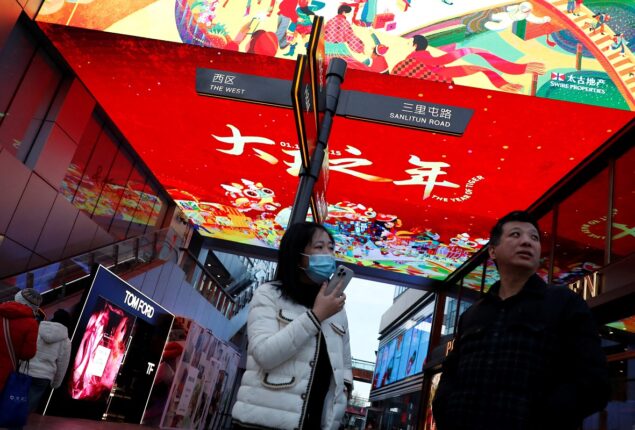
https://www.oldsite.bolnews.com/business/2022/12/covid-limitations-slow-chinas-retail-and-industry-output/
- China’s economy lost steam in November as manufacturing output slowed.
- Retail sales prolonged falls.
- Beijing abandoned some of the world’s strongest anti-virus measures.
China’s economy lost steam in November as manufacturing output slowed and retail sales prolonged falls, disappointing estimates and posting their worst readings in six months due to rising COVID-19 infections and widespread viral bans.
Lockdown in several cities, a property-sector shortage, and decreasing global demand foreshadowed a difficult road ahead, even as Beijing abandoned some of the world’s strongest anti-virus measures.
Industrial output grew 2.2% in November from a year earlier, missing a Reuters poll’s prediction of 3.6% growth and slipping from October’s 5% growth. It was the smallest rise since May, when Shanghai was locked down due to problems in Guangzhou and Zhengzhou.
Retail sales declined 5.9% due to service sector weakness, the greatest drop since May. Analysts predicted consumption to fall 3.7%, accelerating from October’s 0.5% drop.
Catering sales declined 8.4% year-over-year, increasing from October’s 8.1% drop.
Automobile output fell 9.9% after October’s 8.6% growth.
“Weak activity figures show policy has to be loosened more to reignite growth momentum,” said GTJAI’s Hao Zhou.
“Today’s larger MLF rollover fits with lowering policy tones. We expect MLF rates to drop 10bps in Q1.”
China’s central bank increased cash injections into the banking sector Thursday and kept MLF interest rates to maintain liquidity.
Zero-COVID policy impeded consumption and productivity in the world’s second-largest economy. Property market collapse, global recession threats, and geopolitical uncertainty are other challenges.
Reuters calculations based on NBS data show property investment decreased 19.9% year-over-year, the fastest level since 2000.
Policymakers have pushed out support for the sector on practically all fronts, including bank credit lines, bond financing, and equity financing, but analysts say home sales remain poor.
Fixed asset investment grew 5.3% in the first 11 months of the year, behind projections of 5.6% and January-October increase of 5.8%.
Companies worried about finances reduced hiring. In November, the unemployment rate jumped from 5.5% to 5.7%. Youth unemployment fell from 17.9% to 17.1%.
“December statistics may be worse – not because everything is becoming worse in China, but because the end of the tunnel is coming,” said Natixis’ head Asia-Pacific economist Alicia Garcia-Herrero.
“I predict December industrial production to fall.” This is the immediate result of opening up, she added, lowering fourth-quarter GDP growth to 2.8% from 3%.
China wants to promote domestic consumption and investment, official media reported Wednesday, as policymakers face various obstacles after abruptly relaxing COVID-related restrictions, which could lead to an infection surge.
A faltering global economy harms Chinese exports.
China’s GDP grew barely 3% in the first three quarters of this year, considerably below the official objective of “about 5.5 percent.”
At the annual Central Economic Work Conference, Chinese authorities set next year’s economic agenda. Insiders and analysts say they will likely map out extra stimulus initiatives to boost the economy and mitigate disruptions from the expiration of COVID-19 limitations.
Read More News On
Catch all the Business News, Breaking News Event and Latest News Updates on The BOL News
Download The BOL News App to get the Daily News Update & Follow us on Google News.




